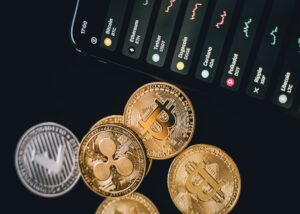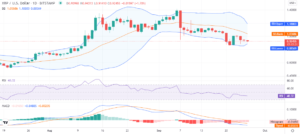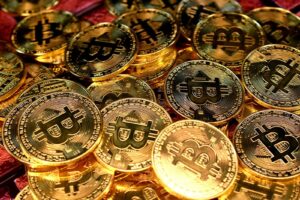
Non-fungible tokens (NFTs) are a digital representation of an asset. They are often used as a tool for ownership and identity verification in the blockchain ecosystem. NFTs can also be used to represent physical assets, such as collectibles, artworks, or even shoes.
In recent years, NFTs have gained traction among non-traditional investors and blockchain enthusiasts. This is due in large part to their unique attributes: they are more scarce than fungible assets like fiat currencies and stocks, which makes them enticing investments for those who prefer something unique and one-of-a-kind.
The use cases for NFTs extend far beyond investment vehicles and into the realms of art collecting, gaming economies, virtual land ownership, and more. One example is Next Earth, which recently ran the world’s first Initial Tile Offering, selling over $1.3 million of virtual real estate NFTs. In the future, Next Earth plans to release “pixel art” features that let users not only buy one-of-a-kind virtual land, but create land art on it as well.
Collectibles featuring rare skins or other digital enhancements have become increasingly popular as well.
One of the main reasons NFTs are gaining traction is because people want to prove ownership digitally. For example, a digital artist or game developer may choose to release their work as an NFT, in order to show proof of ownership and prevent people from pirating the work.
In other cases, such as Cryptokitties and Axie Infinity, users could also buy digital cats or axies and trade them with other users online. Having a digital asset that represents a unique item (such as a rare digital cat) makes it easier for users to prove they own that specific item. This is especially important in blockchain-based games like these, where players need to be able to demonstrate their ownership in order to access certain features or items within the game.
Millennials (and Gen Z) have a deep affinity for collectibles. Everything from sports cards to action figures to rare sneakers are highly coveted by this generation. The NFT market has been flooded with products of all types as a result, and there is no shortage of opportunities for investors looking to diversify their holdings.
This makes sense when you consider that NFTs can be considered a type of digital collectible, and collectibles have a long and rich history – far older than that of blockchain. The appeal of these investments goes beyond simply owning collectibles; it’s about having something unique that connects you to the game world or universe in which it exists.
One main difference between NFTs and regular cryptocurrencies is that the former are non-divisible – they cannot be divided into smaller units. This makes them more scarce than their fungible counterparts, and thus more valuable per unit.
Of course, it’s also impossible to copy NFTs: They have unique identifiers that mean they cannot possibly be duplicated.
A non-fungible token is an electronic file that stores information about ownership in a blockchain ledger. A cryptographic key pair is generated when an NFT file is first created, the private key of which allows that creator to access and own the NFT.
An example of this could be an NFT of a piece of virtual land such as the White House or the Statue of Liberty. On Next Earth, a user can buy virtual lands on a map of Earth, which is minted as an NFT, making it impossible for another user to acquire the same land, unless the user would like to re-sell it.
Ultimately, millennials have unique value systems, with focal points on community involvement, engaging in cyberspace more than ever before, and buying and trading virtual assets. NFTs enable all of this, which explains the rocketing demand for NFTs by millennials.
Source: https://api.follow.it/track-rss-story-click/v3/tHfgumto13CE3pwzQRhj5FLv-B9hV9S2
- access
- Action
- All
- among
- appeal
- Art
- artist
- asset
- Assets
- blockchain
- buy
- Buying
- cases
- Collecting
- community
- creator
- cryptocurrencies
- Cryptokitties
- currencies
- Demand
- Developer
- digital
- Digital Asset
- ecosystem
- estate
- Features
- Fiat
- First
- For Investors
- future
- game
- Games
- gaming
- history
- House
- HTTPS
- Identity
- Identity Verification
- information
- investment
- Investments
- Investors
- IT
- Key
- large
- Ledger
- Liberty
- Long
- Making
- map
- Market
- Millennials
- million
- NFT
- NFTs
- non-fungible tokens
- online
- opportunities
- order
- Other
- People
- physical
- Popular
- private
- Private Key
- Products
- proof
- real estate
- reasons
- sense
- Sneakers
- Sports
- Stocks
- stores
- Systems
- token
- Tokens
- trade
- Trading
- users
- value
- Vehicles
- Verification
- Virtual
- White House
- WHO
- within
- Work
- world
- years












